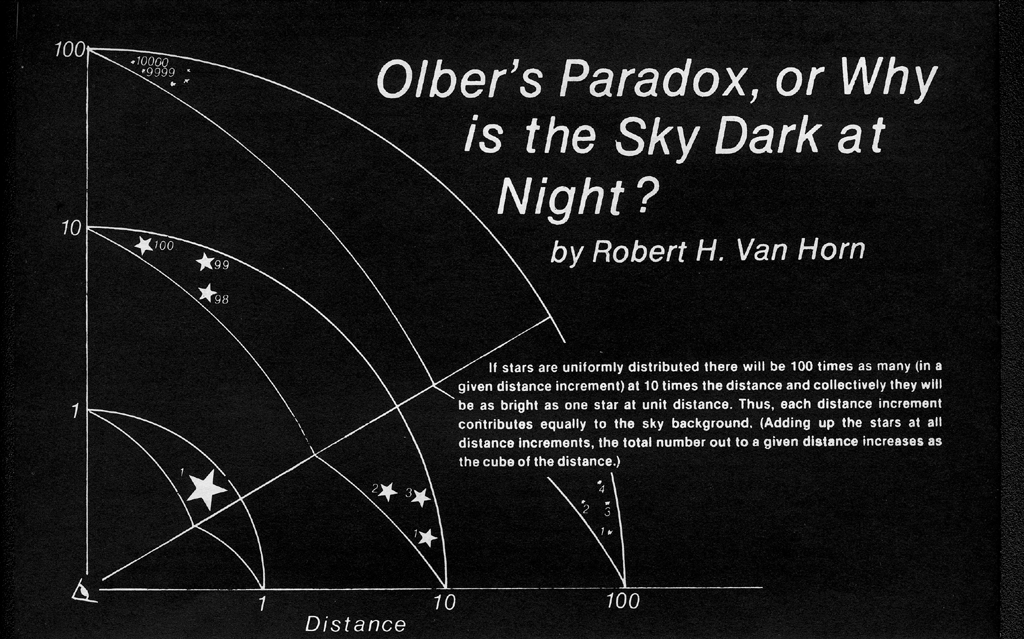Bentley's paradox
Isaac Newton’s Principia describes how the universe works using the law of gravity and the equation \(F=md^2r/dt^2\). But this description lead to two paradoxes (called Bentley’s paradox and Olbers' paradox) which were irreconcilable in the Newtonian framework.
Bentley’s paradox states that if the universe is finite in size then, since gravity is always attractive, all the stars and galaxies should collapse into each other. The second part of this paradox states that if the size of the universe is infinite, then all the stars and galaxies should be torn apart by the force of gravity. Newton proposed that there is only one possible scenario which doesn’t lead to this paradox: the Universe’s size must be infinite and the distribution of mass must be totally uniform throughout this infinite space. But there are two problems with this scenario.
First and most importantly, we know from observation, and the cosmic microwave background radiation in particular, that the mass distribution in the universe is not perfectly uniform. Second, in this scenario the solution \(r(t)\) to the differential equation \(F=md^2r/dt^2\) is an unstable solution. That is to say even the slightest “nudge” exerted on a star would cause a slight deviation from uniformity in mass distribution and would create a “cascade” effect causing galaxies to collapse. Thus Newton’s law of gravity breaks down when applied to the universe as a whole.
Olber's paradox
According to Olbers' paradox, if the universe is infinitely large with a uniform distribution of stars then the night sky should be blindingly bright.
"As more distant stars are revealed in this animation depicting an infinite, homogeneous and static universe, they fill the gaps between closer stars. Olbers's paradox argues that as the night sky is dark, one of these three assumptions about the nature of the universe must be false."\(^{[1]}\) Image by Kmarinas86 [GFDL (http://www.gnu.org/copyleft/fdl.html) or CC-BY-SA-3.0 (http://creativecommons.org/licenses/by-sa/3.0/)], via Wikimedia Commons
Olbers' paradox states that if the size of the universe is infinite with uniform mass distribution, then we should see an infinite number of stars in any direction and the universe should be blindingly bright. This problem befuddled generations of astronomers.
Astonishingly it was a poet named Edgar Poe who was the first person to correctly resolve this problem. He explained that the reason why the universe does not appear infinitely bright is because the distances between us and the most distant stars and galaxies is so vast that light emitted by them hasn’t had enough time to reach us yet. In 1901 Lord Kelvin calculated that in order for the night sky to be white the universe would have to be trillions of years old. In other words, since the universe is only 13.8 billion years old there hasn’t been enough time for the light emitted by stars and galaxies beyond the observable Universe to reach us yet.
This article is licensed under a CC BY-NC-SA 4.0 license.
References
1. Olbers' paradox. (2017, October 9). In Wikipedia, The Free Encyclopedia. Retrieved 18:39, November 10, 2017, from https://en.wikipedia.org/w/index.php?title=Olbers%27_paradox&oldid=804531011
2. Tyson, Neil deGrasse, and Donald Goldsmith. Origins: Fourteen Billion Years of Cosmic Evolution. W.W. Norton & Company, 2014.



